| ||
| ||
Weeds
Dealing with weeds is one of the routine maintenance tasks gardeners need to do to keep their landscapes looking good. This page will be a place to collect pictures of weeds common in Queensland gardens or suberban landscapes, to aid identification. Once you have a possible name, you can then search the internet for more information.













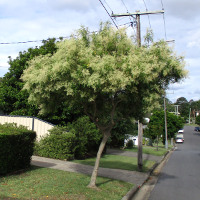
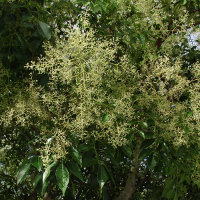
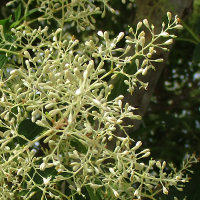









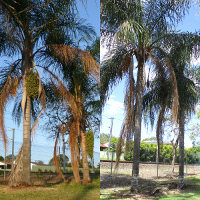
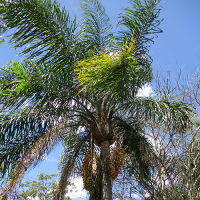
News
Help Extinguish Dutchman's Pipe
Sunshine Coast Regional Council is calling on residents to look out for Dutchman’s pipe. It wants to contain the spread of this invasive vine and eventually eradicate it from the region. Council is currently working with land holders and managers to do just that, notably in the Upper Stanley, Pumicestone, Mooloolah, Maroochy and Mary River catchments. Meanwhile, if you spot the vine anywhere on the Sunshine Coast, the council is requesting that you report it. More information here: Have you seen a Dutchman’s pipe? (December 2020)
Chainsaw Through The Tulips
Fraser Coast Regional Council has declared war on the African tulip tree (Spathodea campanulata), aiming to eliminate the species from its parks and gardens entirely. As a first step, a number were recently removed from Margaret Lin Park in Kawungan. Going forward, staff will be recording the location of other specimens on Council land so that they can be scheduled for removal, too. Council says it will plant replacements of more appropriate species. As an incentive to residents, it's also offering a replacement for every African tulip tree removed from private yards in the region. Read more and learn how how to claim your replacement trees here: Pest trees to be removed from local parks (November 2020)
Tree Troubles
A decision has been made on the fate of four Himalayan ash (Fraxinus griffithii) trees in the centre of Boonah. As non-native species with weedy qualities, they were slated for removal as part of the town's ongoing revitalisation project, but community concern put plans on hold while Scenic Rim Regional Council reviewed the issue. Subsequently, Council announced it will retain three of the trees, necessitating some adjustments to the original landscape design. It will also install a trap which will help prevent the trees' many winged seeds (and other trash) reaching the creeks, but at a cost of $100,000 plus ongoing maintenance. Sources: Council to review trees in Boonah town centre and Council makes decision on Boonah High Street trees (September 2020)
Dingo link to weeds
Overgrazing is not the only cause of woody shrub invasion into semi-arid Australia, a new study finds. Comparison of habitats either side of the dingo fence in outback NSW showed a proliferation of woody species in the absence of dingoes. It's believed that foxes and feral cats reduce numbers of small mammals which eat the shrub seed, thus preventing its germination. Exclusion of dingoes removes a way of controlling these feral predators. Source: Detective work across dingo fence reveals new factor in woody shrub invasion (December 2016)
Steam Weeding the Cassowary Coast
Cassowary Coast Regional Council is introducing steam as a control measure for weeds in public areas. An advantage of the steam unit is that it can be used in all weather conditions, as well as reducing chemical use. It can also be used for killing mold on pathways and other cleaning. Source: Controlling Weeds with Steam on the Cassowary Coast (October 2016)
Weeds a window on origins of agriculture
Discovery of weeds typical of cultivated soils, along with cereal species and grinding tools at an ancient settlement on the shore of the Sea of Galilee now puts the date for the origins of agriculture to about 23,000 years ago , some 11,000 years earlier than previously thought. Source: International collaboration uncovers proof of earliest small-scale agricultural cultivation (July, 2015)
Weeds don't play fair
A study of Digitaria sanguinalis, the common weed of lawns and field commonly called "crabgrass", has shown that there's more to its success than simple competition. Chemicals from Digitaria caused changes in nearby soil microbes which reduced growth of test crops. The allelopathic chemicals could also directly affect other plants. Source: Crabgrass' secret: The despised weed makes herbicide to kill neighboring plants (June 2013)
New weed mat a model of recycling
Australia's CSIRO has developed a new weed mat from linseed straw. Besides its weed control properties, the mat is said to reduce evaporation from the soil while allowing rainfall penetration. It will eventually biodegrade completely, avoiding environmental pollution problems associated with synthetic weed matting. Developers believe that the process, involving high pressure water to mesh the fibres together, could also be used to manufacture matting from other agricultural by-products such as banana or hemp fibre. The fabrics created could potentially be put to other uses, too, such as shopping bags. Source: CSIRO sticks it to weeds this spring (October 2012)
New weed control developed in Qld
A new biocontrol agent developed by the University of Queensland could mean a simple and safe way to control woody weeds. Developed from fungi which already occur in the Australian environment, the treatment is delivered as a capsule inserted into the trunk of the tree. In addition to killing the inoculated tree, the fungi could persist to kill seedlings that subsequently emerge in the area, or even untreated mature trees nearby. Commercialisation of the "bioherbicide" for control of Parkinsonia is underway, but it has the potential to control many types of other woody weeds. More information at the University of Queensland website: Australia's first bioherbicide approaching release (August 2012)
Turn up the heat on weeds
Most of us have heard of using boiling water to kill weeds in paving, but studies at the University of Copenhagen have helped define how such heat treatments (flame, steam or boiling water) can be used most effectively. It was found that the leaves must collapse completely after each application, starving the roots. Also, the treatment must be repeated frequently enough to prevent recovery. Superficial or infrequent treatments permit regrowth and can actually promote grass weeds. With the right strategy, however, this low-toxicity method can eliminate even stubborn weeds. Source: Blanch your weeds (May 2012)
Madeira vine biocontrol program underwayA beetle from South America has been released in various locations in SEQld as a biocontrol against Madeira vine (Anredera cordifolia). Biosecurity Queensland says that it's been tested on 37 related plant species without damage. Results from the first release are promising, and more releases are planned in infested areas over the next two years. Source: Small beetle to control a big problem (November 2011)
Caution advised with "non invasive" cultivars
U.S. researchers warn that some plant cultivars being promoted as "non-invasive" could still spread if they retain the ability to produce some viable seed. Apart from the total number of seed that could be produced over the life of a long-lived species, the offspring could be more prolific, especially if they result from crossing with other cultivars or relatives. The researchers suggest that population growth rate and the likelihood of a plant breeding true from seed be considered when assessing invasiveness, unless it can be proven to be completely sterile. Media release: "Non-invasive" cultivar? Buyer beware. (October 2011)
Beetles battle weeds
Research in the UK confirms that seed predation by beetles reduces weeds in farmland, especially grass weeds. Conserving biodiversity, possibly by leaving an area of field as a "beetle bank" in this case, may help reduce herbicide use and deal with the problem of herbicide resitance. Source: Beetles play an important role in reducing weeds (July 2011)
Updated Weed ID book for S. Queensland
Published by the Weed Society of Queensland, the updated "Weeds of Southern Queensland" is available from Southern Downs Regional Council offices. More informatiion: Get your hands on free updated weed identification book (June 2011)
A new wave in weed control
Australian research is working towards a weed-killing device that uses microwaves instead of chemicals. Energy could be focused on individual plants, making it potenially useful for spot-treament. It would not be affected by wind or rain or leave herbicide residue. Unfortunately, the amount of energy used is relatively high, and making the system more energy-efficient will be one of the aims of future research. More information from the Rural Industries Research and Development Corporation: Microwaves to cook away weeds (June 2011)
Three species of ornamental ginger declared weeds in Queensland
Media release from Tim Mulherin (Minister for Primary Industries, Fisheries and Rural and Regional Queensland) here: Three Gingers banned in Queensland.
Yellow ginger (Hedychium flavescens) is now a Class 1 weed
White ginger (Hedychium coronarium) is now a Class 3 weed
Kahili ginger (Hedychium gardnerianum) is now a Class 3 weed
All are now illegal to sell or trade in Qld, while landowners who have yellow ginger on their properties must eradicate it. More information on declared weeds in Qld, the classification system and your obligations at the Biosecurity Queensland website. (November 2010)
